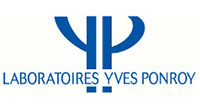
Spreadsheets, such as Microsoft Excel, are extensively used in the corporate and manufacturing world for maintaining contact information, making calculations and developing dashboards and comparison charts of large amounts of raw data. But if you need to share real-time information and inject collaboration into your activities, spreadsheets are simply not enough.
If you are in the CPG industry, here are the five signs it’s time to upgrade to a product lifecycle management (PLM) solution.
Limited Collaboration Between Cross-Functional Teams
When developing a new product using Excel, or another spreadsheet application, you will eventually outgrow its capabilities and find that it hinders your ability to open access to other users and teams for collaboration. Or find that each team uses different tools and spreadsheet templates in siloed environments. Therefore, your simple new product development process becomes more and more complex.
Essentially, you end up with:
- Large files that contain various tabs including multiple sets of data
- Time-consuming workarounds for incorporating data from other spreadsheets
- A process that does not meet the business needs of your teams
- Lack global and cross-cutting visibility.
Difficulty sharing between multiple players with different responsibilities and work habits, data errors, forgotten saves, and manual processes are just a few identifiers that it’s time to leave behind spreadsheets.
Plus, the inability to collaborate directly, in real time, without the use of emails, phone calls or additional meetings leads to time waste, costly errors and lack of visibility on the team’s progress. It becomes complex to lead concurrent work on a single spreadsheet and maintain a single version of the truth that is invaluable in new product development.
Managing your high Volume of Complex and Critical Information
Is it challenging and cumbersome for you to query high volumes of data within one spreadsheet? Or even harder, with multiple teams across multiple files? If so, then it’s time to consider an integrated solution.
Plus, tools like Excel are limited for version and revision control, data review and validation, and data lock (to prevent data modification)—making it very easy to compromise or lose important data.
The complex information structures of manufacturing—like multilevel BOMs with links to raw material information, cost updates within an ERP and supplier stock levels, etc.—cannot be managed efficiently within spreadsheets with limits on the amount of dependencies that can be created between various items. In addition, the lack of an integrated solution makes it very time consuming to update information across multiple spreadsheets. For example, updating in the cost of a raw material would then require a manual update of all impacted recipes. This makes mass updates inefficient and leaves room for errors, and inconsistent data.
Your Product Development Team Is Scattered in Various Locations or Countries
Typical business structures have evolved more in the last year than any other, with increasing growth, remote workforces and global expansions resulting in members of your development teams working in various locations, at different hours, adapting your product to the local culture.
That’s the point where the spreadsheets tools end up becoming obsolete: they were not designed to support such a complex collaborative organization. Adapting to a remote and global workforce requires more security, more sharing and more collaboration to ensure data and information traceability. And a spreadsheet can’t live up to those needs, providing a clear sign it’s time for a switch to a PLM solution.
Lack of Flexibility for High Innovation Rates and Quick to Market Expectations
If you are handling multiple products or expanding more than 20% of your product line each year with new product development, flexibility and scalability to anticipate the future is a must. Unfortunately, spreadsheets lack the required level of elasticity to really support your activities.
If you’ve been limited by the new product development speed of spreadsheets then it’s a clear indicator that a PLM solution can be an asset for your organization.
Insufficient Reporting Capabilities for Tracking Strategic Business Goals
Setting business goals is at the center of any strategy. However, you need to be able to track your activities through KPI and real-time, accurate reporting. Integrated reporting functionality within robust PLM solutions provides insight into your global corporate vision as well as analytics on overall company and product performance and the impact of your business lines on each other. This level of reporting is not easily attainable when operating on multiple spreadsheets or siloed data sources.
If your company lacks the ability to analyze portfolio, renewal and innovation rates and identify development opportunities (based on categories, product age, range depth, number of ranges, etc.) you’ve outgrown the functionality of disparate spreadsheets from your other project development components.
As your organization grows it becomes more and more apparent that a tool to help you standardize your processes, automate workflows and integrate your key business functions is essential. At that same junction it becomes apparent how Using not-fit-for-purpose, outdated or manual tools can hold you back. Thus, while Excel spreadsheets are a very effective tool for collecting and formatting data, they make it difficult to ensure the coherence of a project, especially in the case of new product development.
For efficient product development in a complex and evolving industry you need a central tool facilitating remote and global collaboration in a single space that can manage a high volume of complex data. The inclusion of include advanced reporting that supports development and ensures a high innovation rate will also be invaluable to the success of your company.
PLM software centralizes all product related information allowing you to streamline new product development processes, making your team more efficient and collaborative to reach your business goals.
To learn how our robust PLM solution can help your business overcome the limitations of spreadsheets, contact our team today.






























